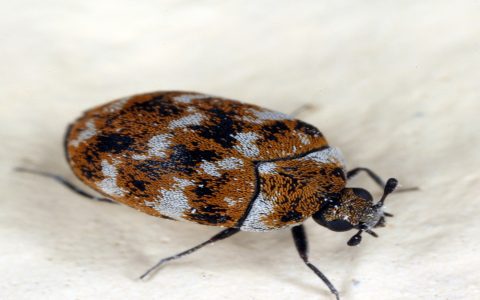Common Little Black Bugs in Bathrooms
Several types of small, dark insects are commonly found in bathrooms, primarily attracted by the consistent moisture, humidity, and organic matter present. Identifying the specific insect is crucial for effective management.
Drain Flies (Psychodidae)
Also known as moth flies, sewer flies, or filter flies.
- Appearance: Small (typically 1.5-5mm long), fuzzy, dark grey to black bodies with broad, hairy wings that are held tent-like over the body when at rest, giving them a moth-like appearance.
- Habitat: They breed in the gelatinous organic film that accumulates in drains (sinks, showers, tubs), P-traps, and overflow pipes. Larvae feed on bacteria, fungi, and other microorganisms in this slime.
- Signs: Adults are often seen resting on walls near plumbing fixtures or flying weakly in short, jerky patterns.
- Control: The most effective control is to eliminate their breeding sites. Thoroughly clean drains using a stiff brush and an appropriate drain cleaning product to remove the organic slime. Regularly flush less-used drains. Ensure P-traps are functional and maintain their water seal.
Fungus Gnats (Mycetophilidae and Sciaridae families)
These are small, dark, mosquito-like flies.

- Appearance: Tiny (1-5mm), slender, dark-bodied flies with long legs and antennae. Their wings are often smoky grey. They are weak fliers.
- Habitat: Fungus gnats thrive in moist soil and decaying organic matter. In bathrooms, this can include overwatered houseplants, slow or clogged drains with organic buildup, areas with persistent leaks leading to mold growth, or even damp mops and sponges. Larvae feed on fungi and organic material in these damp conditions.
- Signs: Adults are typically seen flying erratically near windows, sinks, or around potted plants.
- Control: Reduce excess moisture. Allow the soil of any bathroom plants to dry out significantly between waterings. Clean drains thoroughly to remove organic buildup. Repair any water leaks promptly. Improve ventilation by using an exhaust fan during and after showers to reduce humidity.
Springtails (Collembola)
These are minute, wingless insects that jump when disturbed.
- Appearance: Very small (0.25-6mm), wingless, and can vary in color, but dark grey or black species are common in damp indoor environments. They possess a unique forked appendage (furcula) tucked under their abdomen, which they use to spring into the air.
- Habitat: Springtails are highly attracted to moisture, mold, mildew, and decaying organic matter. In bathrooms, they can be found in perpetually damp areas such as around leaky pipes, under sinks, in damp grout, near constantly wet shower floors, or in damp wall voids.
- Signs: Often found in groups in damp locations. Their characteristic jumping behavior when disturbed is a key identifier.
- Control: The primary method of control is to reduce moisture and humidity, and eliminate their food sources (mold, mildew). Repair all water leaks. Improve ventilation significantly (e.g., consistent use of an exhaust fan). Clean any existing mold or mildew. Allow chronically damp areas to dry out thoroughly. Dehumidifiers can be beneficial in persistent high-humidity situations.










